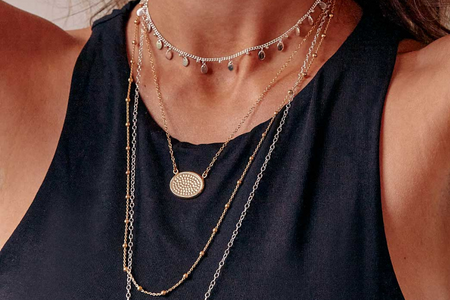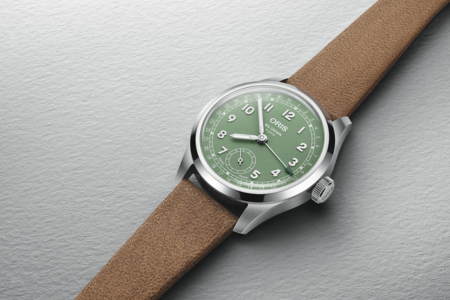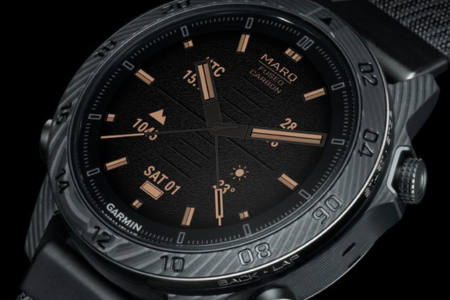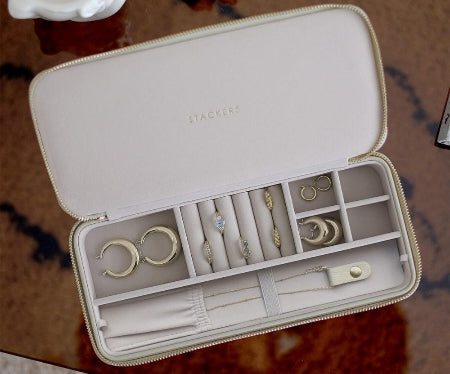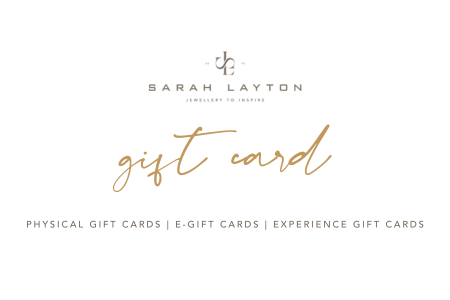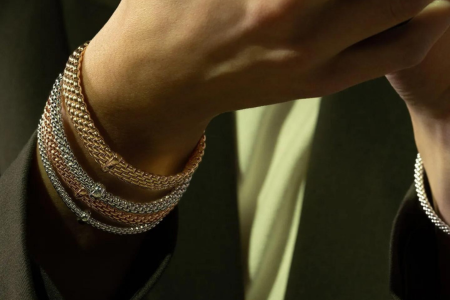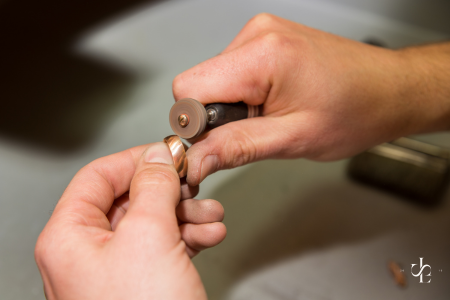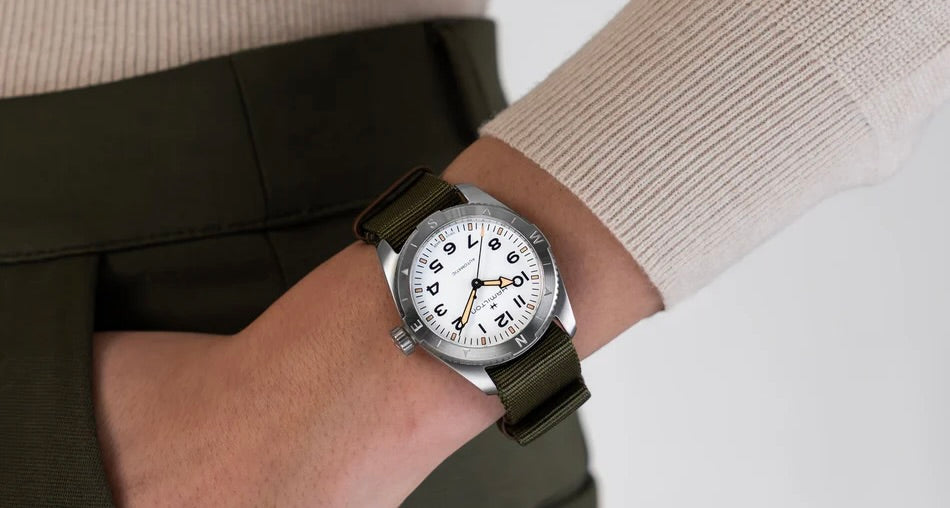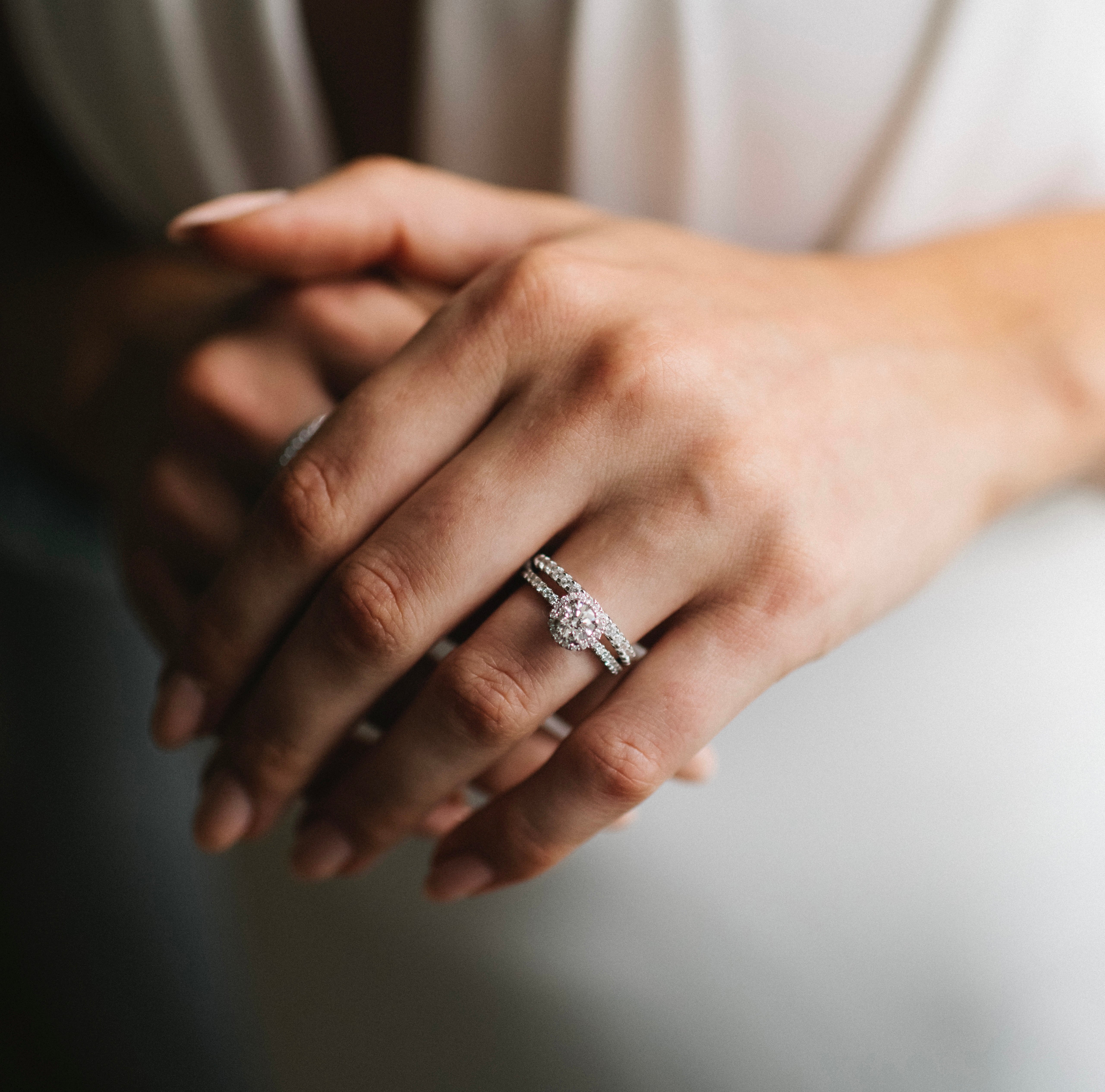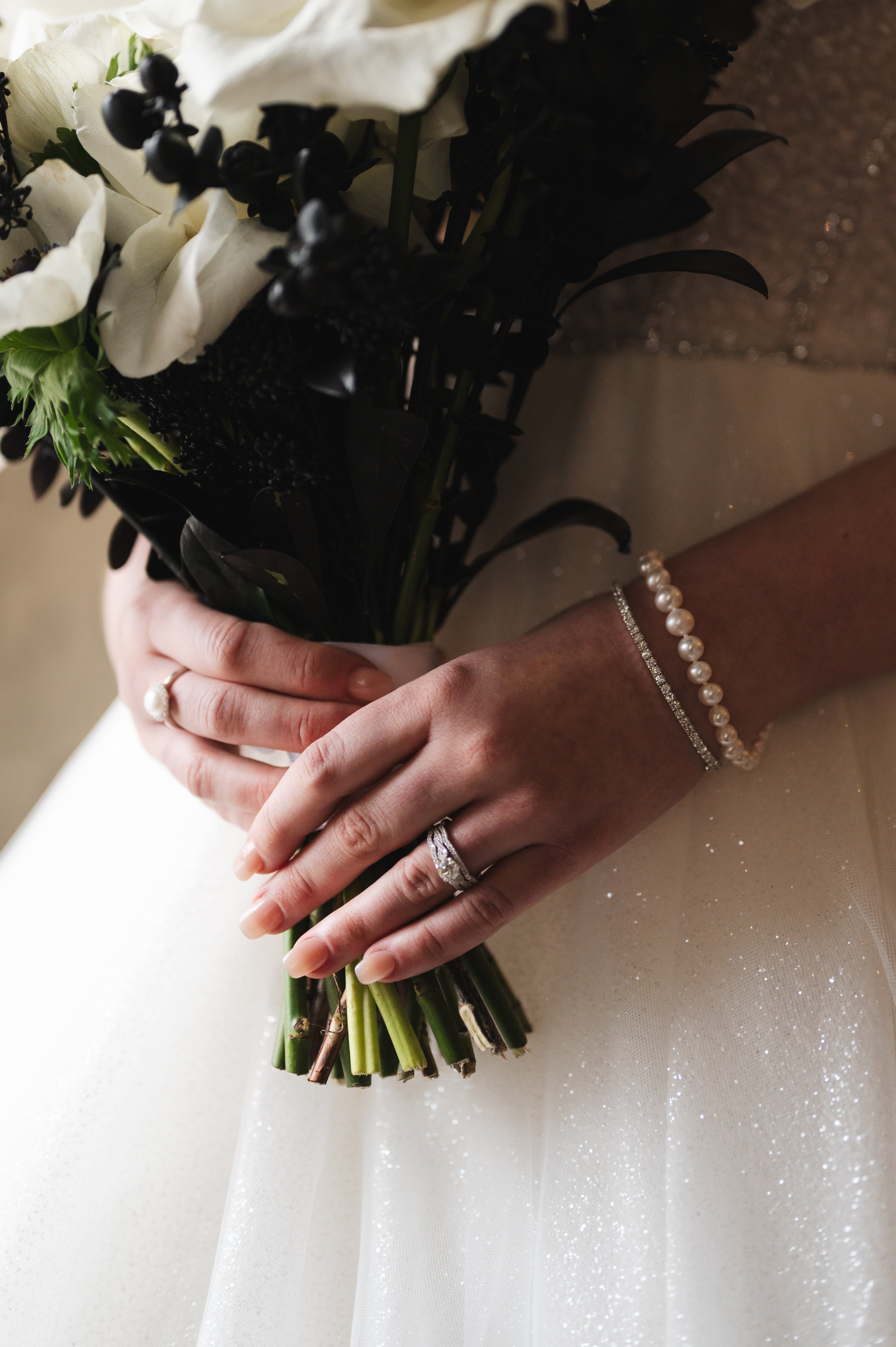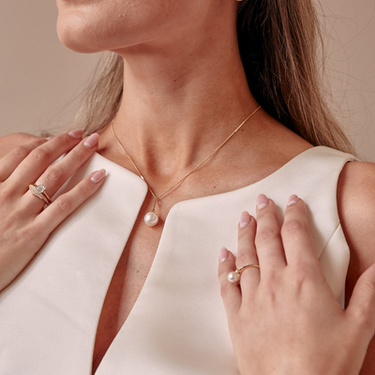The ultimate symbol of commitment, choosing the right engagement ring when asking someone you love to spend the rest of their life with you is an important decision! There are so many factors to consider, so if you don’t already have strict instructions from your spouse-to-be about what engagement ring they’d like or if you’re looking for inspiration, keep reading to explore our helpful engagement ring guide.
We’ve broken down the key considerations; metal types, diamond cuts and stone-setting options, to help you find ‘the one’.
How to choose an engagement ring
The most important thing to remember when buying an engagement ring is that it has to feel right for whoever is wearing it. It should feel like it was made just for them and be an extension of their style and personality.
So, when it comes to our top engagement ring tips, these are three key things we recommend you consider first:
- The type of diamond cut you want.
- The metal you would like the ring to be made from.
- The style of stone setting you like.
There are some other important things to keep in mind, too, but let’s explore these three key things in more detail first.
The Stone
The first thing you see and certainly the most talked-about! There are many options when it comes to engagement rings, from sapphires (à la Princess Catherine) and rubies to emeralds (take a look at Rita Ora and Megan Fox’s stunning designs!) and more. However, the most sought-after will always be a diamond, with their captivating display of sparkle. The precise cut of a diamond is important for maximising the brilliance of the stone, focusing on proportions and symmetry, whilst the diamond shape refers to the ‘outline’ shape of the diamond when viewed from the top.
Some of the most classic diamond shapes are:
- Round - a classic, circular diamond with unparalleled light reflection and sparkle. An extremely popular and timeless choice.
- Princess - a square or rectangular shape that provides a more modern, angular alternative to a round cut diamond, but with plenty of fire and sparkle.
- Oval - an oval-shaped stone, it’s a unique alternative to the classic round cut diamond with a flattering, elongating effect when worn. Popular with those looking for something with a modern-vintage feel.
- Pear - also known as a ‘teardrop’, the pear cut is a combination of a round cut diamond and a marquise diamond. A versatile and flattering shape with timeless appeal.
- Emerald – an elongated rectangular shape with step-cut facets and a large table. It has a luxurious, sophisticated Art Deco vibe with long, symmetrical lines and cut corners.
- Cushion - a square or rectangular diamond with soft edges and round corners that resemble a cushion or pillow (hence the name), giving a romantic, vintage look.
- Asscher – featuring a square shape with step-cut facets and a small table, creating a ‘hall of mirrors’ effect, this cut has a glamorous, Art Deco look and feel.
- Marquise - named after the Marquise de Pompadour by King Louis XV, a marquise diamond is similar to an oval shape but more elongated and with pointed tips. A popular choice for those looking to make a statement, this cut is sometimes called a 'navette' cut.
- Radiant - a radiant cut diamond is a hybrid of an emerald cut shape and the sparkle of a round, brilliant cut diamond, typically with cut corners. A modern, elegant and striking cut.
Consider the person who will be wearing the ring, and think about their personal style, the aesthetic they lean toward, and the type of diamond cut that will most flatter their hand.
The Metal
One thing to consider when choosing an engagement ring is what kind of metal you would like the engagement ring to be made from. There are many options on the jewellery market for you to choose from, here are some of the more classic, timeless choices:
Platinum – naturally silver-white in colour, platinum is one of the strongest and most durable metals. The rarest of all precious metals, platinum is usually comprised of 95% platinum and 5% other metals (known as ‘alloys’). This purity makes platinum the perfect choice for those with sensitive skin as it is naturally nickel-free and hypoallergenic. Whilst platinum is at a premium price point, it is also a relatively low-maintenance metal, retaining its natural white colour and shine with a simple polish.
White gold – the bright white finish on white gold is achieved by alloying yellow gold with other white metals (such as palladium or silver) and adding a rhodium plate. Similar in look to platinum, but with higher maintenance, white gold will need to be re-rhodium plated every 18 months or so (depending on the wearer) to retain its bright, lustrous finish.
Yellow gold - the classic warm-coloured metal. Gold comes in a range of different carats, which influences the cost and provides options for all budgets. Most of our yellow gold engagement rings are crafted in 18ct gold (75% pure gold, 25% alloy metals), but many can also be made in 9ct or 14ct. 22ct gold is much softer and not really suitable for setting stones into, however, it does make for a beautiful plain wedding band! Once seen as a traditional choice, yellow gold engagement rings are gaining popularity, in both classic and more contemporary designs.
Rose gold – a warm, soft-pink hue which is created by adding copper as an alloy metal. It’s a flattering and romantic shade that works in both traditional and contemporary designs. Pink, purple and soft orange gemstones, such as morganite and amethyst look particularly pretty when set in rose gold.
The Setting
When you know what metal you want to go for and you’ve got a good idea about the type of diamond cuts you love most, the next thing to think about is how you want the stone—or stones—to be set.
The ‘setting’ describes the part of the ring that holds the diamond, or multiple diamonds, and affects the overall look and finish of the ring.
Here are some of the most classic stone-setting styles available:
Solitaire
An iconic design, the solitaire style is when there is just one single stone set in either a claw (prong) or bezel setting, ensuring the focus is on the diamond. It’s one of the most classic and elegant types of engagement ring and is a consistently popular choice for its timelessness and flexibility in terms of cost.
Halo
A halo-style stone setting is where the main, show-stopping stone sits in the middle and is surrounded by a frame – or halo - of smaller stones. It creates a sparkling display and can give the illusion of a larger centre stone. A ‘true’ halo will have a space between the centre stone and the outer stones, but other styles such as a double halo, hidden halo and cluster halo are also popular.
Cluster
A cluster setting is traditionally when a collection of smaller stones is arranged in a way that creates the illusion of a bigger diamond. It’s a more cost-effective way to create a real statement piece. It’s often seen in gemstone engagement rings, such as Princess Catherine’s sapphire and diamond engagement ring.
Trilogy
As the name suggests, a trilogy stone setting is the arrangement of three stones together to create one cohesive design. Representing the past, present and future, it's a timelessly romantic setting style. You can be as creative or classic as you like with trilogy styling, as you can experiment with the size, shape and colour of the stones within the design.
Some other things to consider when buying an engagement ring:
As well as visual elements like the metal of the band, the type of diamond cut and how the stones are set, below are some other pretty important things to keep in mind when it comes to buying an engagement ring.
The Cost
Some say you should spend between one month and three months' salary on an engagement ring. Ultimately, it depends on your income, preference and whatever you’re comfortable with spending.
Figure out what your personal budget is and then shop within those boundaries. Our collection of engagement rings has a wide range of prices, so there’s something to suit everyone.
Type of diamond
All diamonds are spectacular but they’re not all created in the same way. The majority of our engagement rings feature natural diamonds, but we also have a selection of laboratory-grown diamonds (also known as created diamonds, man-made diamonds, engineered diamonds and cultured diamonds).
Technically, optically and chemically, they’re both diamonds, formed from a single element – carbon. However, their origins and production differ. Laboratory-grown diamonds, as the name suggests, are grown in a lab using advanced technology, either Chemical Vapour Deposition (CVD) or High Pressure High Temperature (HPHT) methods. Each of these methods mimics the natural process of diamond formation in a controlled environment. Because laboratory grown diamonds can be grown at scale, the price point is much lower than their natural counterparts, meaning you can purchase a larger diamond for less. However, there is no certainty it will retain any value in the long term. Natural diamonds have a more romantic, almost magical story. Formed over billions of years under high pressure and high temperatures, hundreds of miles beneath the Earth’s surface, natural diamonds are inherently rare.
It’s important to consider all the factors before deciding which option is best for you. We want you to feel empowered to make the right choice, and our friendly, knowledgeable team are always on hand to help guide you and answer any questions you may have.
How to buy an engagement ring from Sarah Layton
All of our engagement rings are available in a variety of styles and diamond cuts, in your metal of choice from platinum, white gold, or yellow gold - so there is something for every love story. Each one has been carefully curated and beautifully crafted by our expert goldsmiths and diamond setters.
If any of the stunning engagement rings you’ve seen on our website have caught your eye, you can shop online and get it delivered straight to your door. If you’d prefer to reserve your ring to pick up in-store, we can arrange that for you too. Simply let us know or select ‘Reserve in store’ on the product page.
We offer 0% finance options and free delivery on all orders over £75 to make purchasing your dream ring as smooth and stress-free as possible.
If you’d like some more engagement ring advice or have any particular questions, please don’t hesitate to get in touch - we’ll be more than happy to help.




